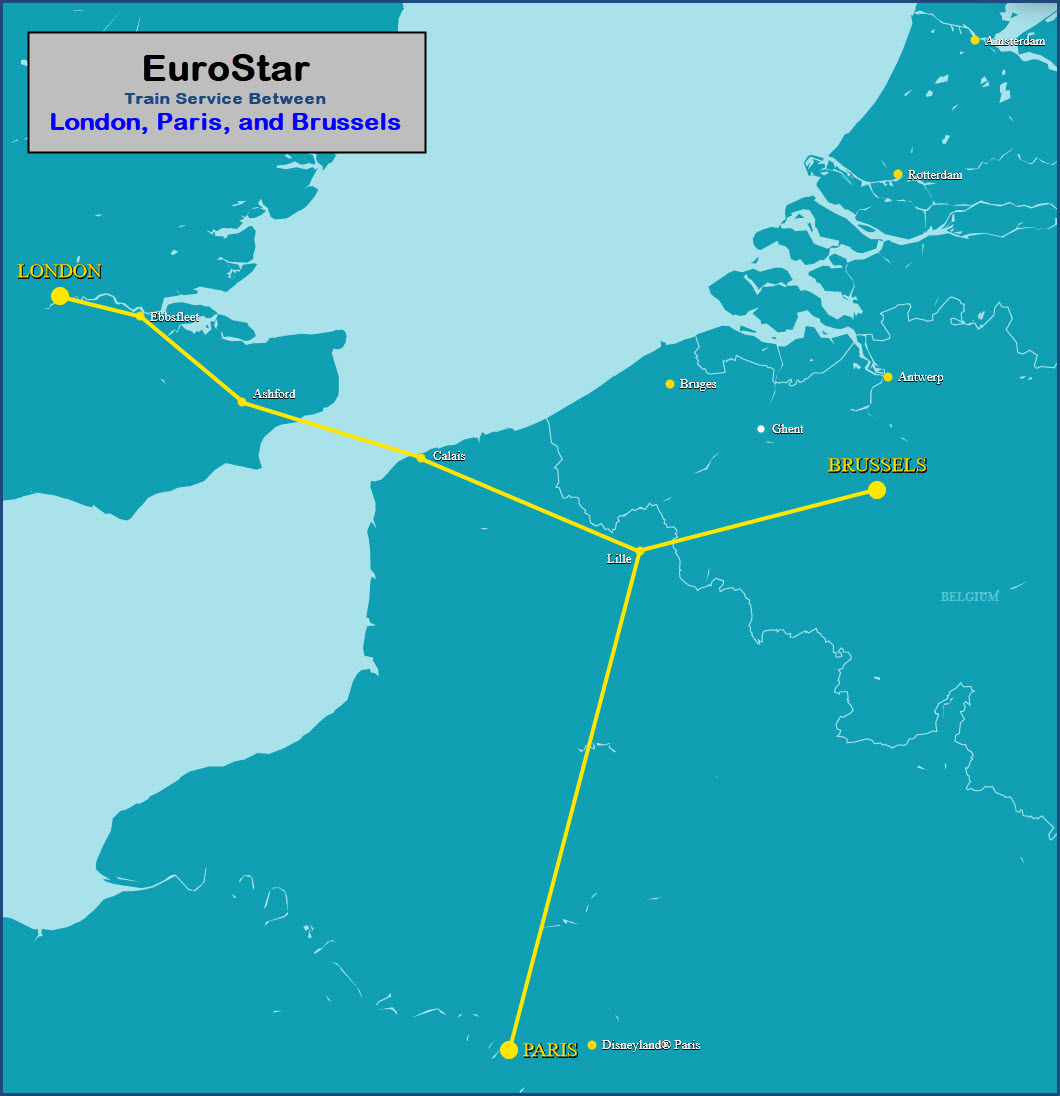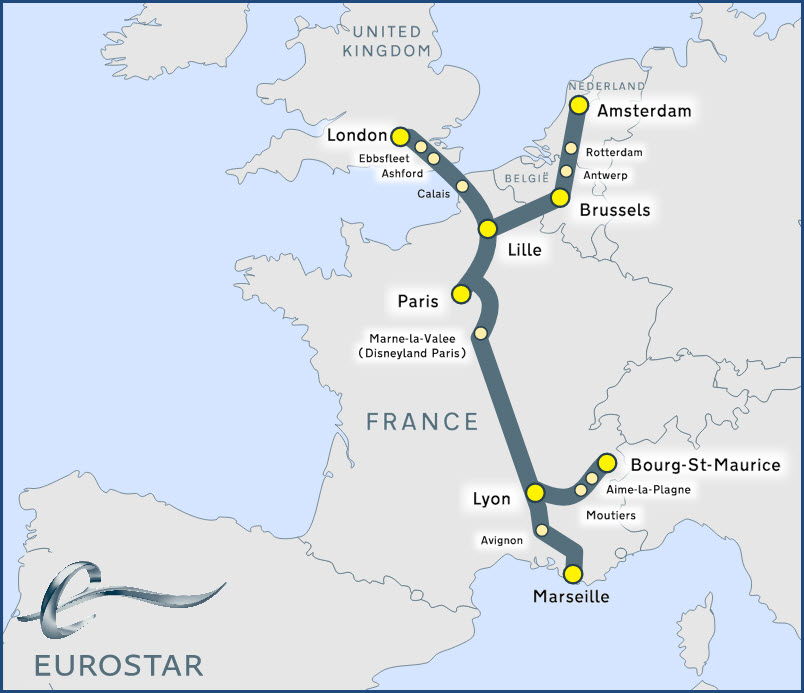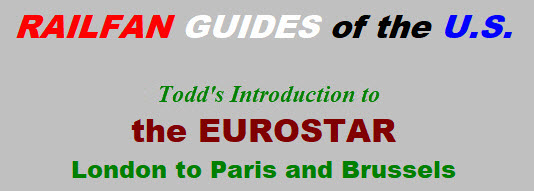
In General
Getting Here
Map
Pictures
Terminus Locations
London / Waterloo
London / St Pancras
Paris
Brussels
Floobydust
RAILROAD SIGNALS HOME
Location / Name:
London England
Paris France
Brussels Netherlands
What's Here:
the Eurostar Train
Data:
GPS Coordinates: as needed
Phone A/C: n/a
Postal Code: n/a
Access to the train/transit in:
London / Waterloo Station:
-- London Underground Subway - Bakerloo, Jubilee, and Northern Lines

London / St Pancras International Station:
-- London Underground Subway:

-- Trains:

Paris / Gare du Nord:
-- SNCF - TGV service, Thalys
-- Métro - La Chapelle Station - 4 and 5 Lines
-- RER - Magenta Station - B and D Lines
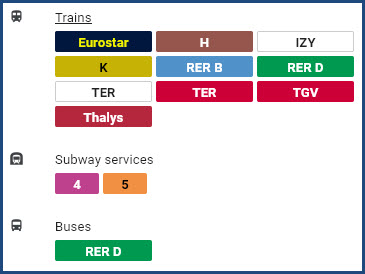
Brussels: Midi/Zuid station:
--
-- Métro -
--
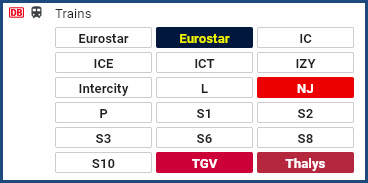
The Scoop:
If you're traveling from London to Paris by train, you will be using a train called the Eurostar. It goes between the St Pancras International station in London to Gare du Nord in Paris, and takes 2 hours and 16 minutes. A standard train ticket from London to France starts around $74.
Eurostar is an international high-speed rail service connecting the United Kingdom with France, Belgium and the Netherlands. Most Eurostar trains travel through the Channel Tunnel between the United Kingdom and France, which is owned and operated separately by Getlink.
The London terminus is St Pancras International; the other British calling points are Ebbsfleet International and Ashford International in Kent. Intermediate stations in France are Calais-Fréthun and Lille-Europe, with trains to Paris terminating at Gare du Nord. Trains to Belgium and the Netherlands serve Midi/Zuid station in Brussels and Rotterdam Centraal, before terminating at Amsterdam Centraal. Additionally, in France there are direct services from London to Disneyland Paris and seasonal direct services to southern France (Lyon, Avignon and Marseille) in summer, and to the French Alps in winter.
In Paris, Gare du Nord platforms 3 to 6 serve the Eurostar train.
Although the headquarters for Eurostar is in London, the U.K. sold their 40% stake in the organization to a variety of investment firms. The SNCF in France has a 55% stake, and the National Railway Company of Belgium has a 5% share. Eurostar is operated by Eurostar International Limited (EIL).
Technical Stuff:
Eurostar e320, a fourth-generation train of the Siemens Velaro family, started commercial operations in late 2015. The interoperable high-speed train will run on the London-Paris-Brussels line, traversing the Eurotunnel between the UK and mainland Europe. It was officially unveiled at St Pancras International station, London, in November 2014.
Siemens is the general contractor for the project while Pininfarina has been assigned to design both the interiors and external livery and perform similar works to revamp the existing trains in Eurostar’s fleet.
Orders for the Eurostar e320 high-speed train - Eurostar was created as a single and unified corporate entity owned by SNCF, SNCB and LCR in September 2010. In December, a £700m (approximately $1,076bn) investment to add ten new e320 trains to its fleet and carry out a complete upgrade of its existing 28 trains. It further decided during the e320 unveiling ceremony to add seven additional e320 trains to its fleet, which will increase the overall investment in the project to £1bn (approximately $1.5bn) and the number of new e320 trains to 17.
Financing for the Eurostar e320 project - The European Investment Bank (EIB) along with seven other international banks, with KfW IPEX-Bank acting as the Mandated Lead Arranger, is providing approximately €270m (approximately $307m) for the Eurostar e320 project.
Eurostar e320 high-speed train design - With a traction power of 16,000kW, Eurostar e320 can reach a maximum operating speed of 320km/h (200mph). It is provided with eight identical and independent traction converter units and 64 axles, of which 32 are driven. Its traction system is designed to operate on 25kV AC and 1.5kV / 3kV DC voltage systems.
It is capable of carrying more than 900 passengers as a result of the 20% capacity boost given to it, compared to the existing 28 Eurostar trains which carry 750 passengers. The entire propulsion system and technical modules are distributed under the floor over the entire length of the train, providing more space for passengers. The train’s roof is equipped with eight pantographs for dealing with Europe’s different power systems and contact line types.
Eurostar e320 is equipped with a regenerative braking system, a rheostatic brake system, and a pneumatic brake system. It is also fitted with special fire extinguishing equipment and fireproof doors and is designed to be operable for 30min under its own power to exit a tunnel in the event of a fire.
It is the longest train in the Velaro family and has an overall length of 400m, which is 10m longer than Eurostar’s existing trains. The train features 16 cars, with Business Premier and Standard Premier coaches located at the ends.
Signalling, control and train protection systems - The train’s signalling, control and train protection systems include a Transmission Voie-Machine (TVM) signalling system, Contrôle de Vitesse par Balises (KVB) train protection system, Transmission Beacon Locomotive (TBL) train protection system, Runback Protection System (RPS), European Train Control System (ETCS), Automatic train protection (ATP) system, Reactor Protection System (RPS) and Sibas 32 train control system.
Amenities - The e320 is Wi-Fi accessible throughout and has a portal providing vital information such as live news, weather and destination guides. Onboard flat-screens are installed on all the cars and entrance areas, and seat reservation displays using OLED technology to provide easy finding of seats. Each of the ergonomically designed reclining seats is provided with a power socket, flexible reading lamp, a sliding dining table and more luggage areas. Four spaces are provided for wheelchair passengers.
Energy-efficiency features of the Eurostar e320 - The end car of the train features a high roof, which improves the sonic boom during movement through tunnels, ad-running resistance, and reduces exterior noise. Roof-mounted pantographs and air-conditioning units reduce the energy demand. The spoiler, nose and front section of the train are aerodynamically optimized. The electric brake system of the Velaro is also energy- efficient as the surplus braking energy is fed back into the power grid, resulting in 10% energy savings and a reduction in mechanical wear.
Contractors involved with the development of Eurostar e320 - Nomad Digital has been contracted to supply onboard Wi-Fi connectivity and state-of-the-art infotainment facilities for the new trains. Corys will supply a replica desk simulator of the new train in September 2015 to train the drivers of the new units.
Acknowledgements:
Photographers as noted
Open Railway Map
Wikipedia
Google Maps
Bing Maps
Websites and other additional information sources of interest for the area:
https://www.eurostar.com/us-en
https://upload.wikimedia.org/wikipedia/commons/2/2b/Carte_M%C3%A9tro_de_Paris.jpg
https://en.wikipedia.org/wiki/Paris_M%C3%A9tro
https://parisbytrain.com/paris-rer/
https://www.introducingparis.com/rer-train
https://en.wikipedia.org/wiki/R%C3%A9seau_Express_R%C3%A9gional
https://www.railway-technology.com/projects/eurostar-e320-high-speed-train/ where the technical stuff came from!
https://www.tripsavvy.com/paris-train-stations-map-1508772
Sight of a Eurostar high speed train, on winter service n°9095 from Bourg-Saint-Maurice (in the French Alps) to London, arriving at Albertville in Savoie.
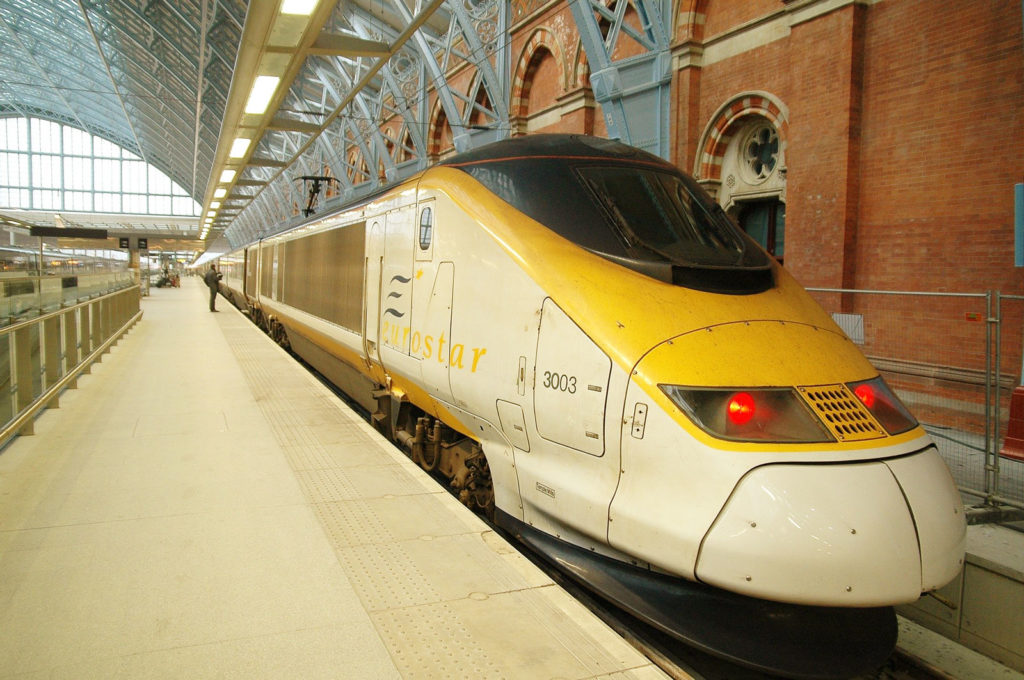
Terminus Locations
London, United Kingdom: Waterloo Station
GPS Coordinates: 51.50247, -0.11330
South Bank, London, SE1 8SR, UK
The Waterloo Station was the terminus of Eurostar for 13 years till November 13th, 2007. The next day, St Pancras International, a station about 2.1 miles to the north, took over that role.
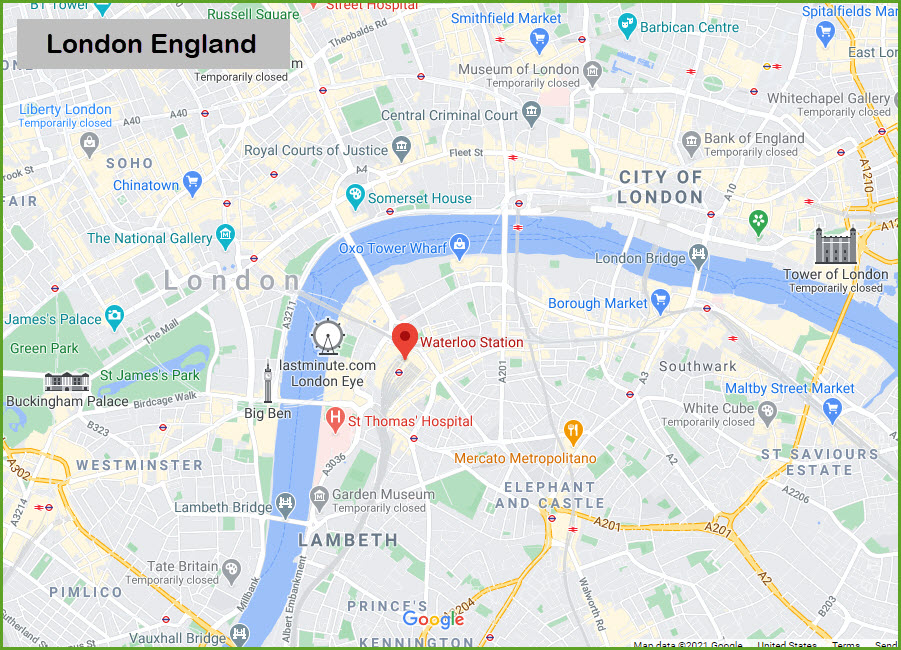
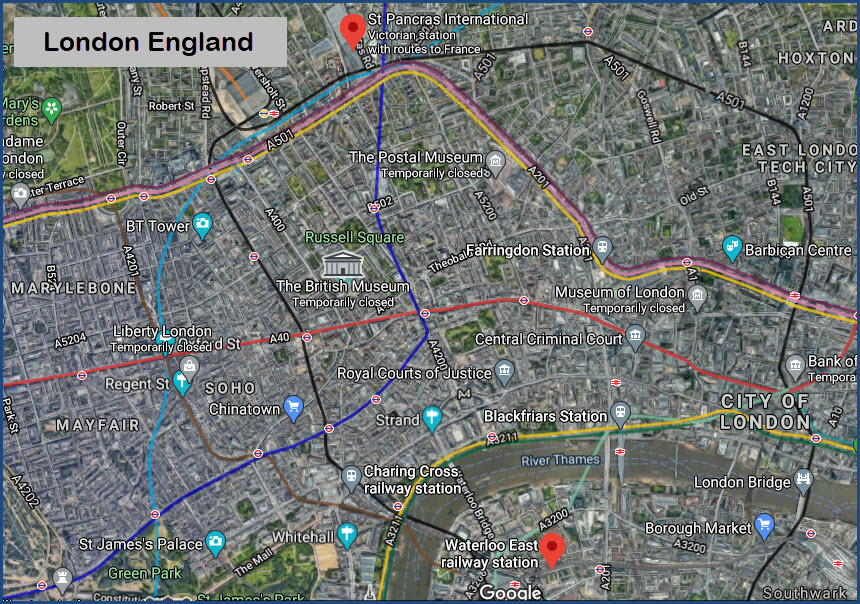
Looking at the map below, we can see that the Eurostar has to take a completely different route to get to St Pancras in comparison to how it got to Waterloo.
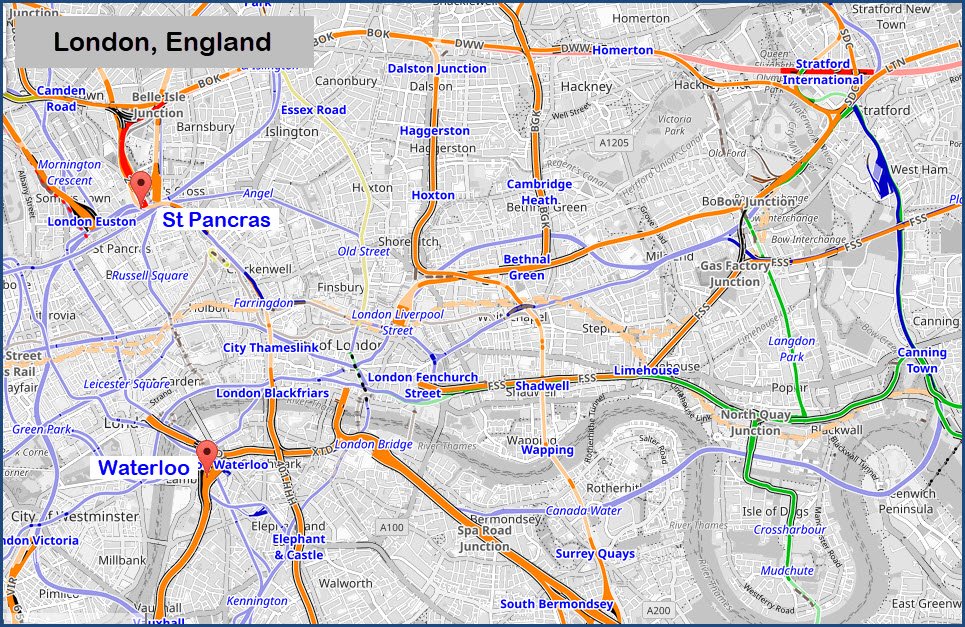
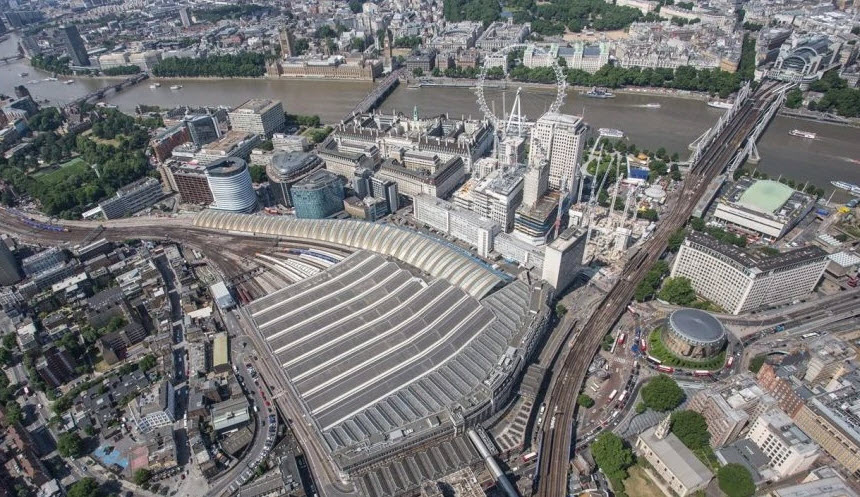
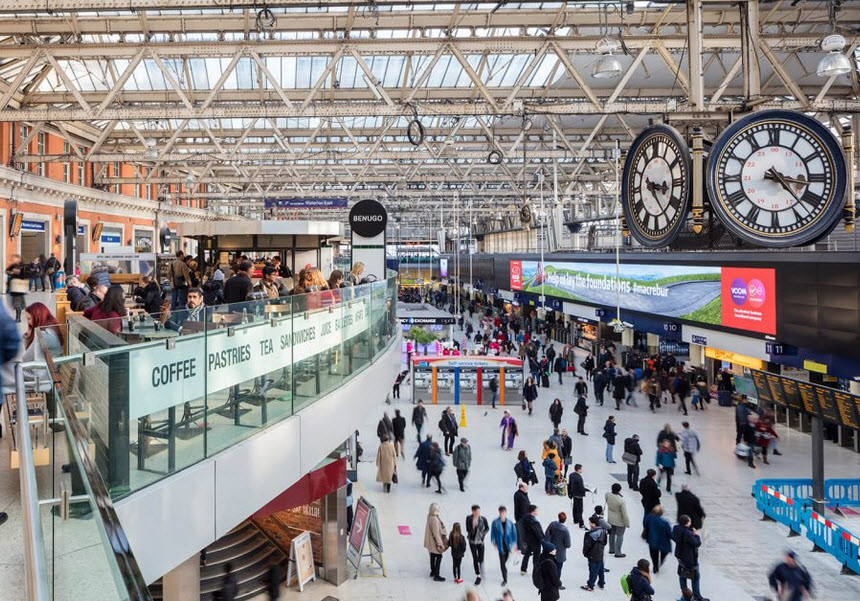
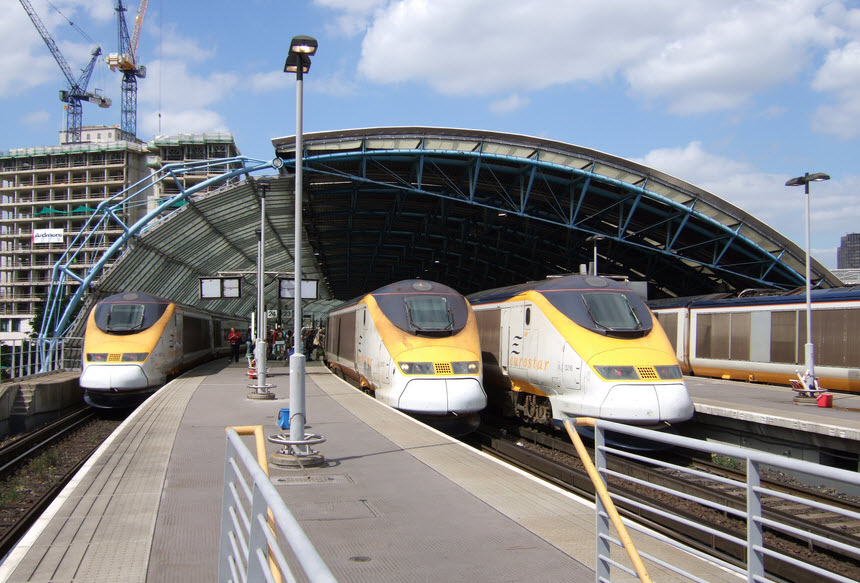 June2006, photo by Timothy E Baldwin via Wikipedia
June2006, photo by Timothy E Baldwin via Wikipedia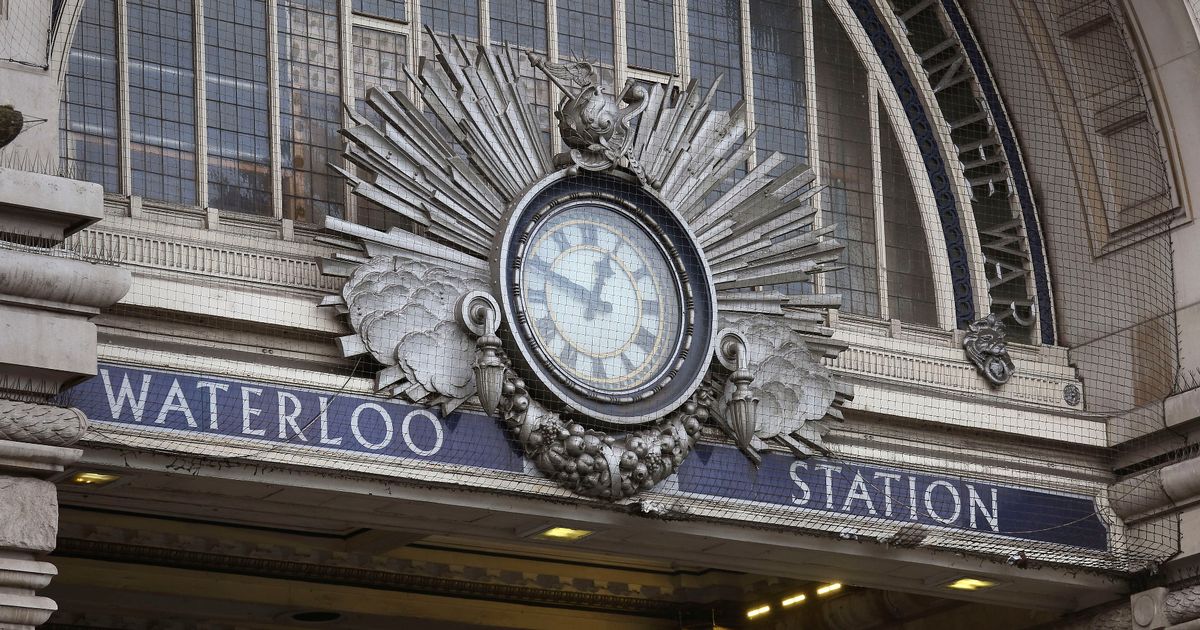
London, United Kingdom: St Pancras International Station
GPS Coordinates: 51.53119, -0.12602
Euston Rd, Kings Cross, London N1C 4QP, UK
https://stpancras.com/
https://en.wikipedia.org/wiki/St_Pancras_railway_station
https://stpancras.com/filming-photography
https://www.seat61.com/stations/london-st-pancras.htm one of the better info sites on St Pancras
St Pancras Station took over the role as the British end of Eurostar on November 14th, ending service to Waterloo that started on xxx. To coincide with the new honor, the name of the station was changed to St Pancras International.
St Pancras is at the southern end of the London Borough of Camden on a site orientated north–south, deeper than it is wide. The south is bounded by Euston Road (part of the London Inner Ring Road), and its frontage is the St Pancras Renaissance Hotel, while the west is bounded by Midland Road which separates it from the British Library and the east by Pancras Road which separates it from King's Cross station.
The station was constructed by the Midland Railway (MR), which had an extensive network across the Midlands and the North of England, but no dedicated line into London. After rail traffic problems following the 1862 International Exhibition, the MR decided to build a connection from Bedford to London with their own terminus. Local services began running to the Metropolitan Railway junction underneath the terminus on 13 July 1868. The station itself opened to the public on 1 October. The first service was an overnight mail train from Leeds.
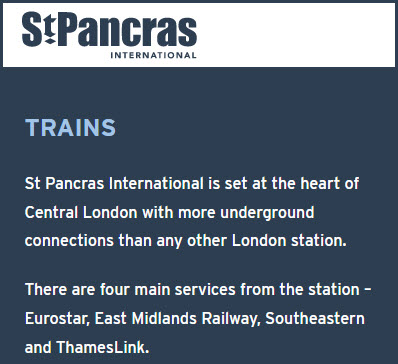
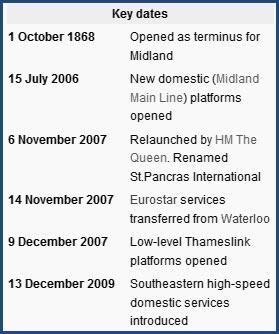 Here are some of the key dates for St Pancras
Here are some of the key dates for St Pancras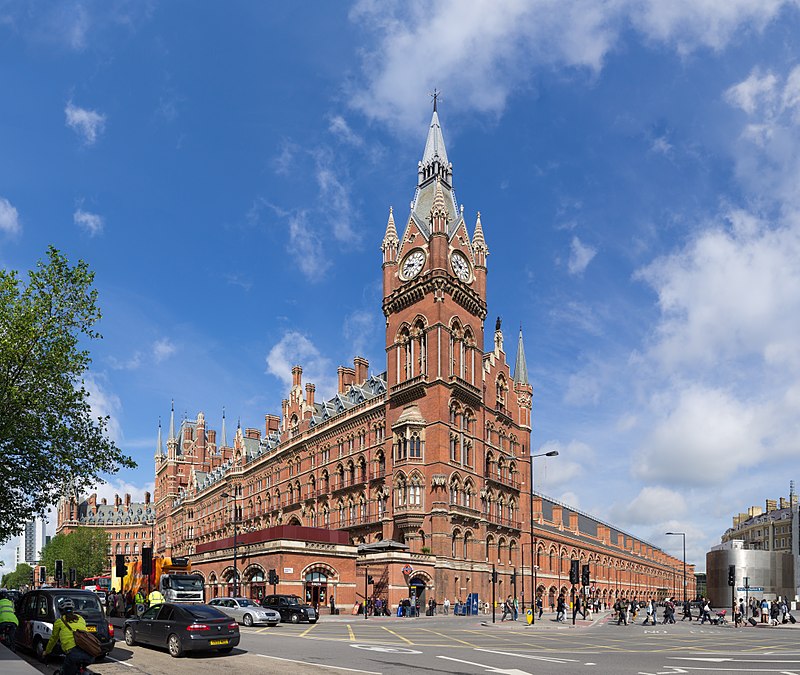 June 23, 2012, photo by Wiki user Colin
June 23, 2012, photo by Wiki user ColinAbsolutely Magnificent!
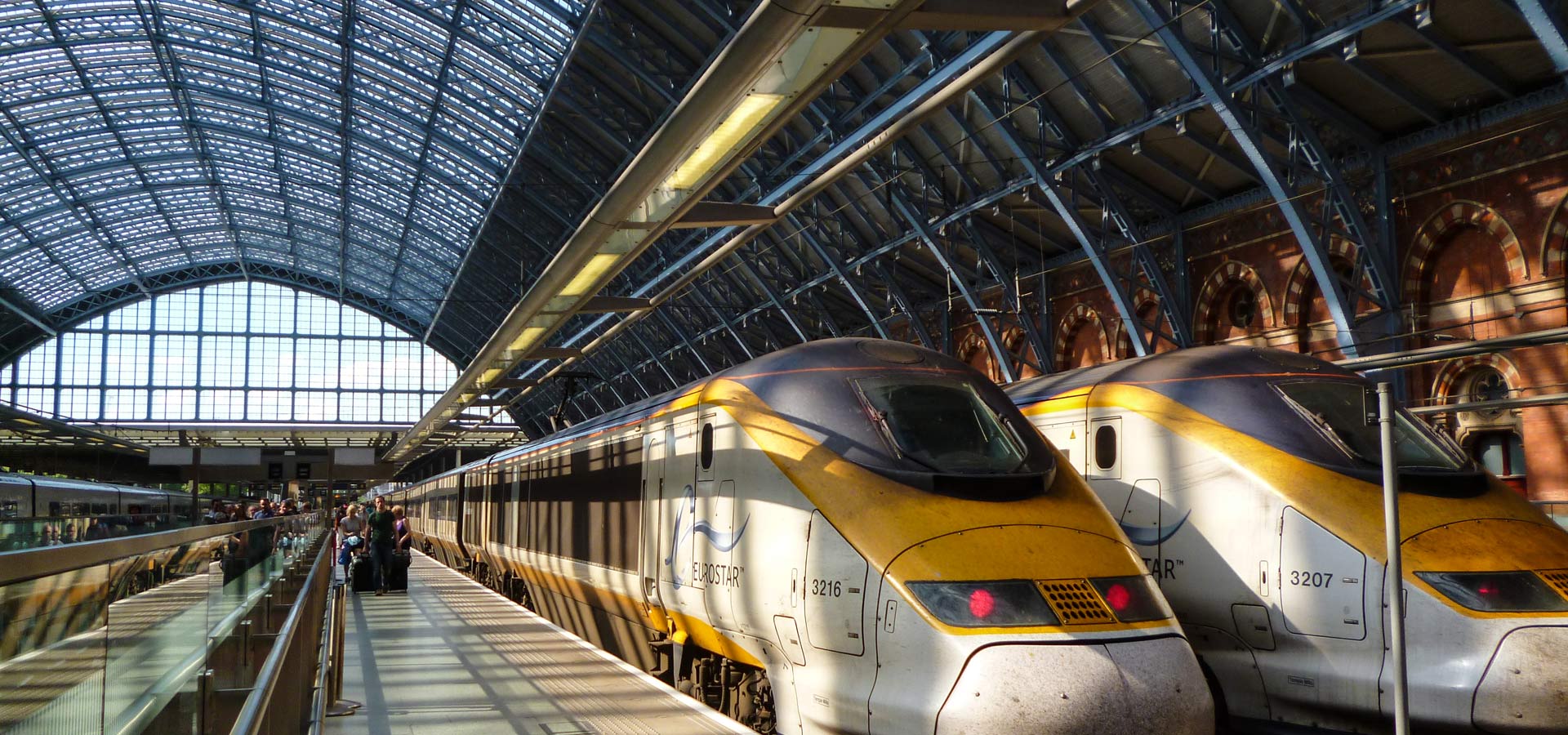
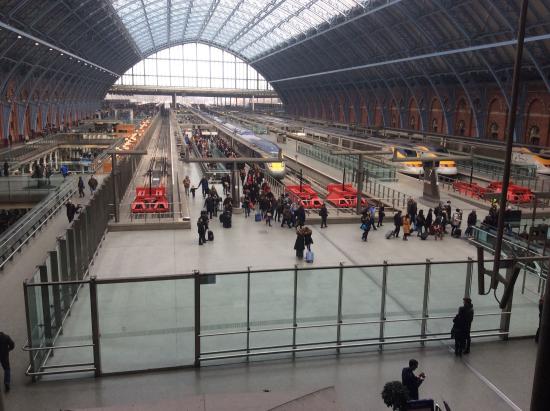
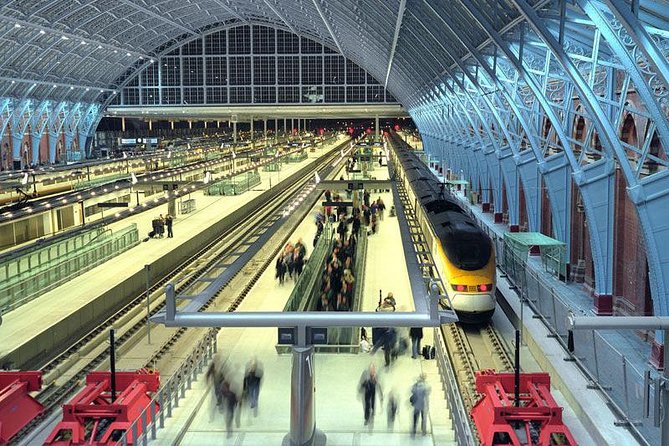
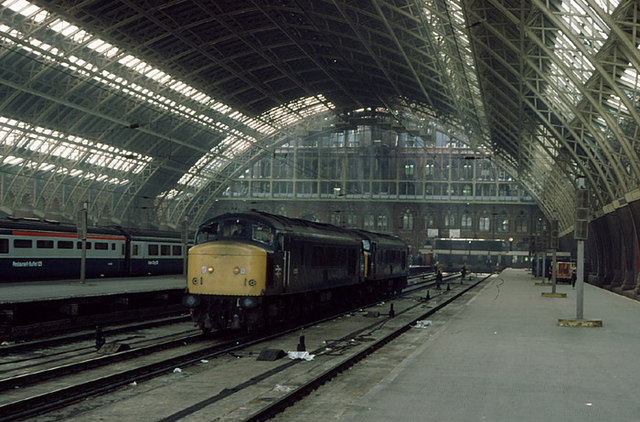 1984, photo by Martin Addison
1984, photo by Martin AddisonResting Between Duties 45102 and 45103 wait in St Pancras station. A crew is in the cab of 45102, so she will probably be away soon. The beauty of William Barlow's magnificent trainshed is evident. Fittingly for the Midland Railway's London terminus, it was constructed by the Derbyshire based Butterley company in 1868. At the time of its completion it was the largest single span structure in the world.
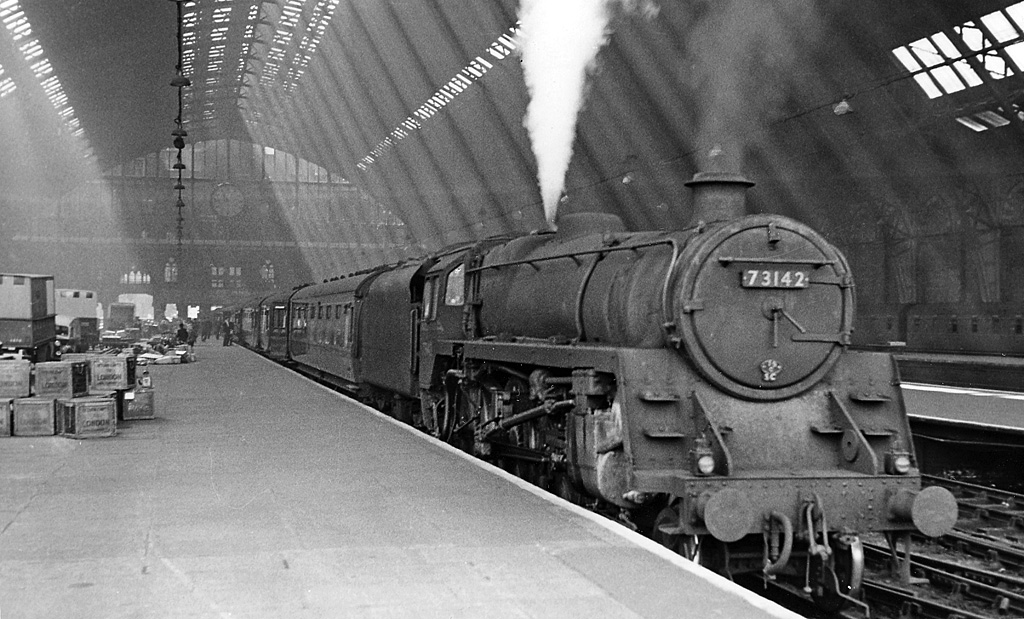 1957, photo by Ben Brooksbank
1957, photo by Ben BrooksbankInside St Pancras Station, 53 years ago. View southward, to buffer-stops on Platform 3. The 10:50 express to Leicester is waiting for me to join it, with BR Standard 5MT 4-6-0 (with Caprotti valve-gear) No. 73142.
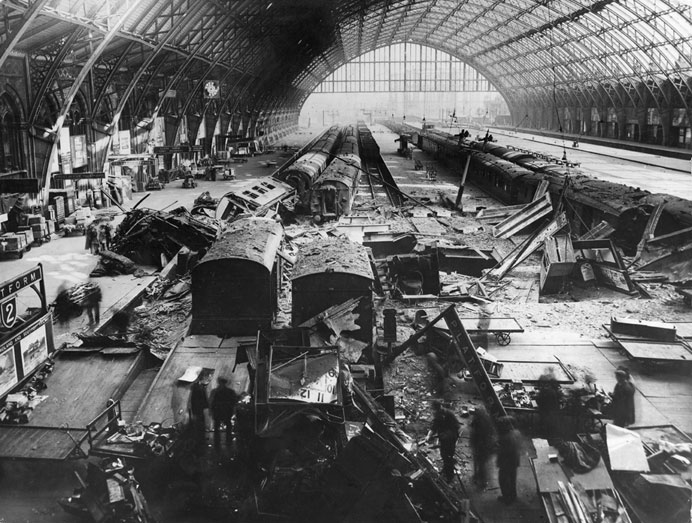 May 1, 1941, Bomb damage
May 1, 1941, Bomb damage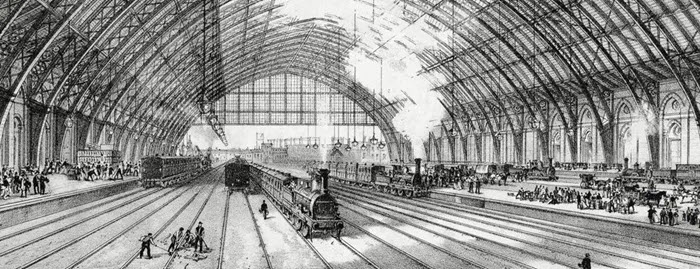
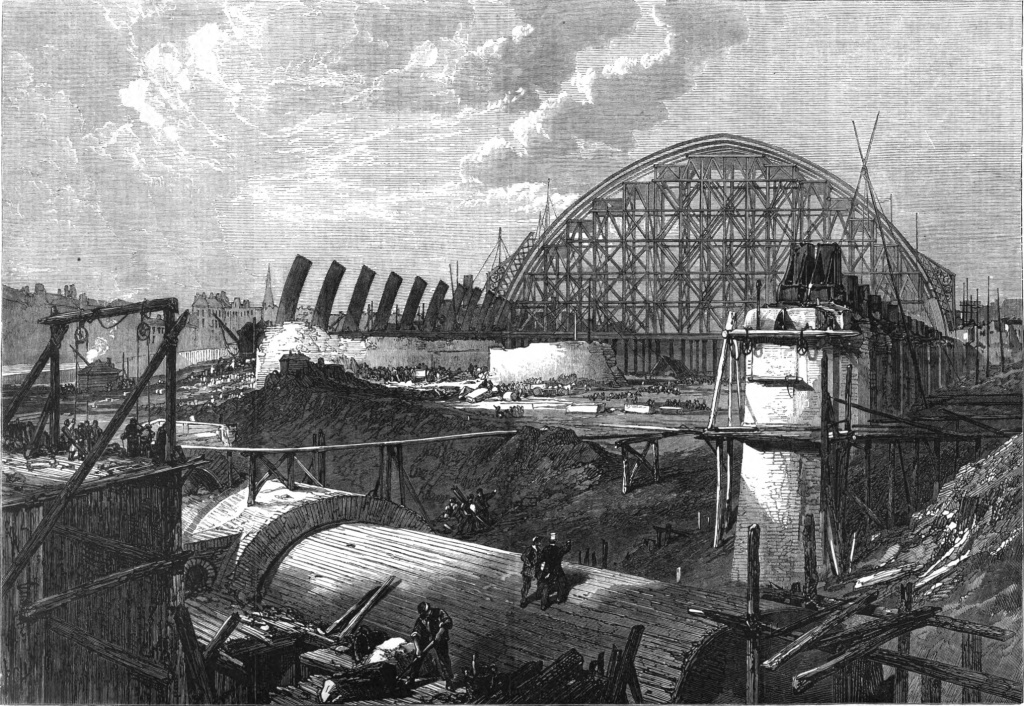 Illustrated London News, February 15, 1868
Illustrated London News, February 15, 1868St Pancras train shed under construction, engraved for the Illustrated London News, from a viewpoint just south of the churchyard. The timber scaffolding will shortly move forward to allow work to begin on the next of the arches, the stubs of which are already in place. The giant half-buried pipe carries the Fleet sewer.
Here's a few pictures I came across from EBay listings - 3 from the construction days, 3 from the early 1900's:
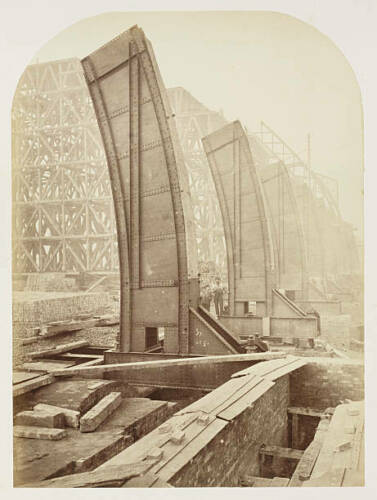
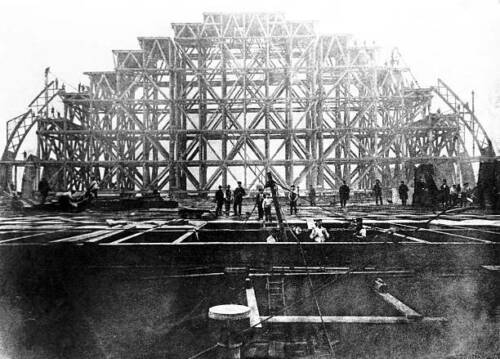
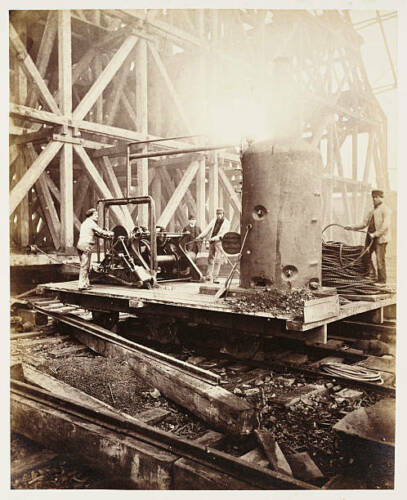
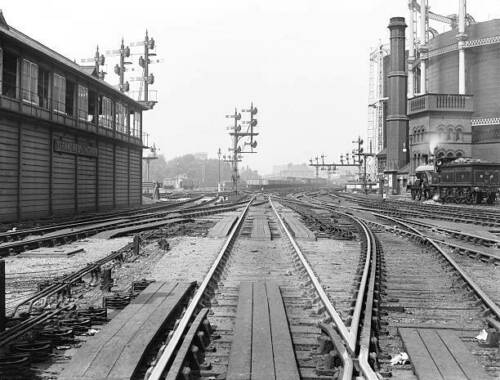
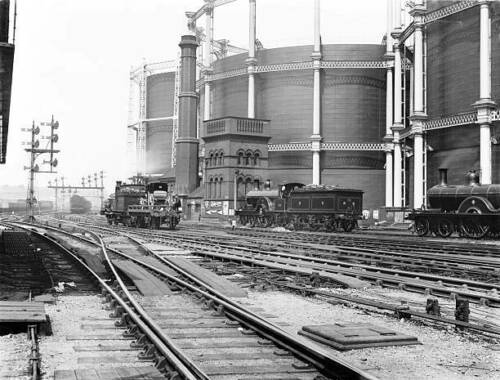
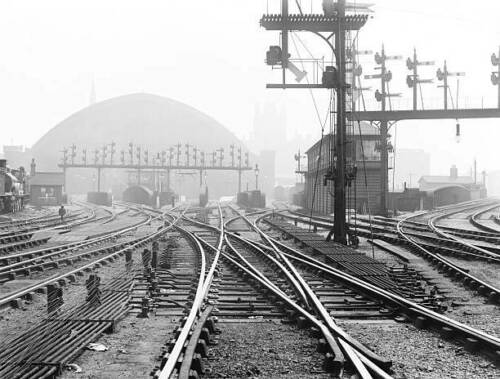

Paris, France: Gare du Nord
GPS Coordinates:
18 Rue de Dunkerque, 75010 Paris, France
Gare du Nord is close to the CBD of Paris, it is only a few blocks away from another great station, Gare de l'Est. To the north of Gare du Nord, are a couple of huge yards. For you Americans out there contemplating a trip to Paris, keep in mind that the French are not as used to railfans as people are here in the states - this comes from spending three weeks in France back in 2002 for business, we were in Toulouse, Grenoble, and Aix en Provence.
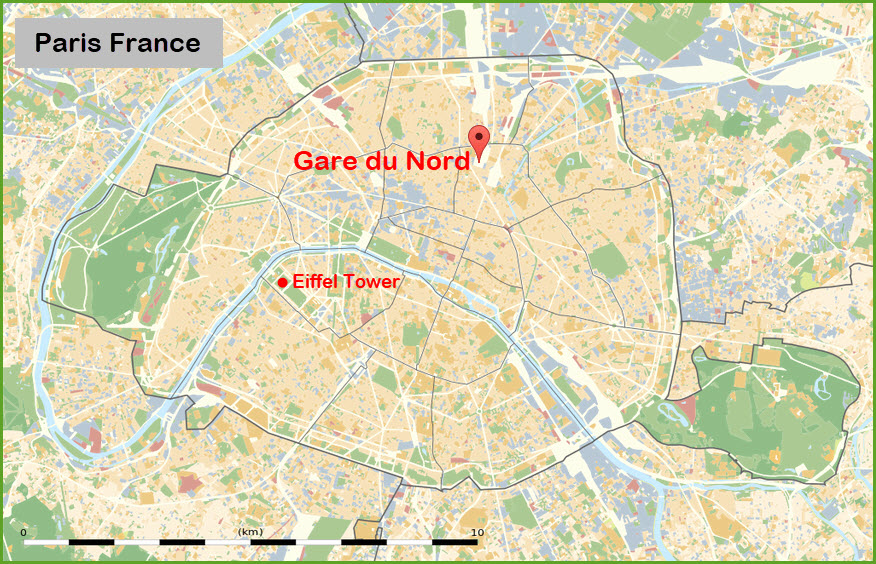
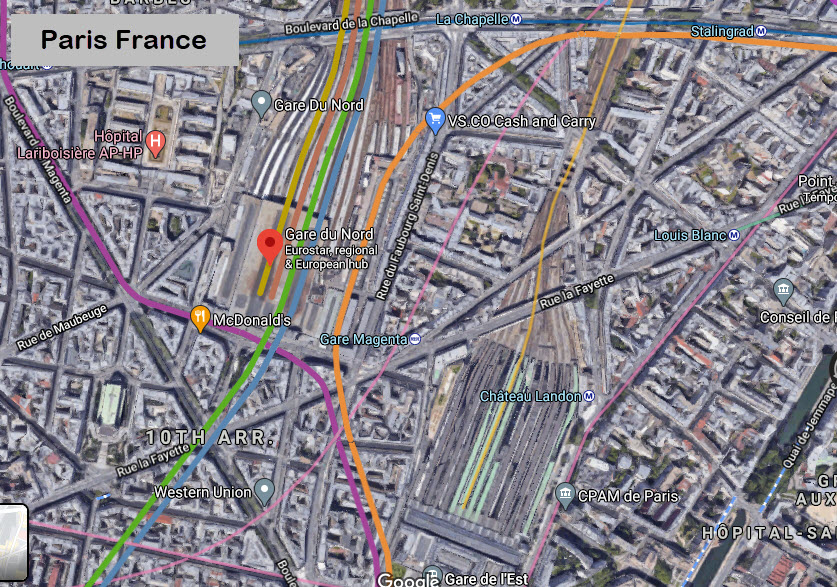
Here you can see the yards adjacent to both Gare du Nord and Gare de L'Est.
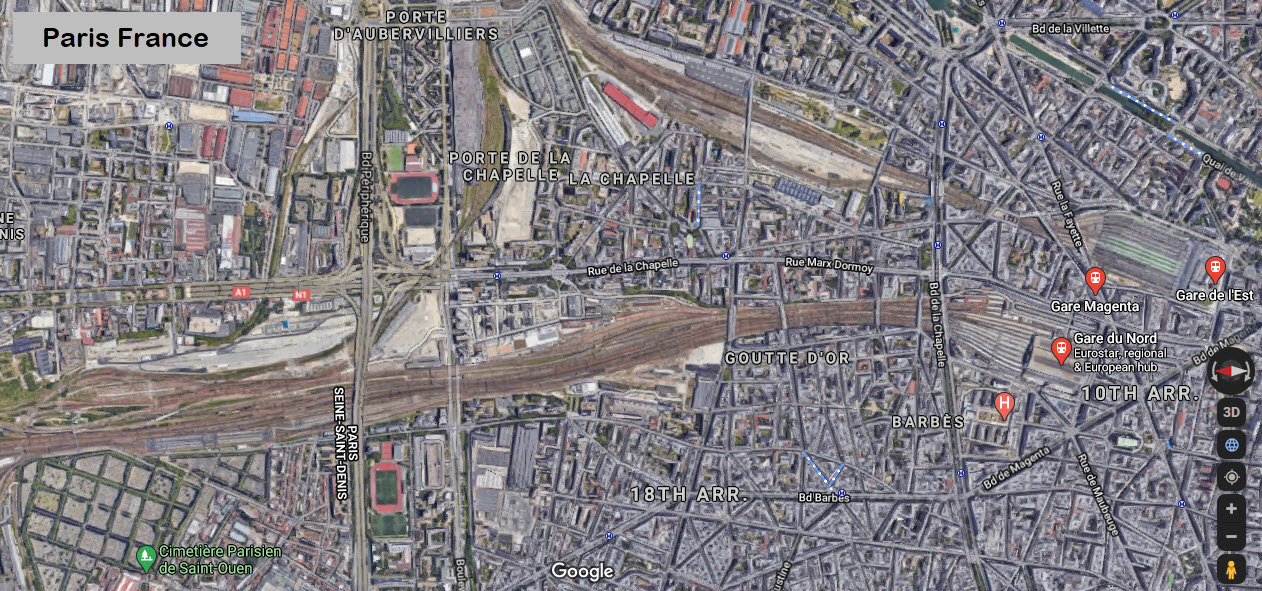
Brussels, Belgium: Brussel Zuid Station
GPS Coordinates: 50.83558, 4.33612
Avenue Fonsny 47B, 1060 Brussels, Belgium
http://www.belgianrail.be/fr/gares/recherche-gares/1/bruxelles-midi.aspx
https://www.seat61.com/stations/brussels-midi.htm
The station is Bruxelles Midi in French, Brussel Zuid in Flemish, Brussels South Station in English - it's all the same place.
Brussels Midi is the main hub station used by all mainline trains serving Brussels including Eurostar to London, Thalys to Paris, Amsterdam & Cologne, German Railways ICEs to Cologne & Frankfurt, Intercity trains to Luxembourg and Belgian domestic trains to Bruges, Ghent, Antwerp & so on.
Brussels Midi originally opened as a terminus in 1869. Brussels Nord was also a terminus. In 1952, the 3.8km Jonction Nord-Midi line opened through the centre of Brussels linking Nord, Central & Midi. This turned Nord & Midi into through stations and enabled Brussels Midi to become the main hub for all trains serving Brussels.
There are 22 platforms, numbered from northwest to southeast.
The tracks run on a viaduct above ground level, there are escalators & stairs to the concourse at street level below.
Eurostar uses platforms 1 & 2 on the northwest side of the station, or platforms 3 & 4 if running to or from Amsterdam.
To board a Eurostar train, you must check in at the Channel Terminal.
Thalys trains to and from Paris, Rotterdam, Amsterdam & Cologne use platforms 3, 4, 5 or 6.
ICE trains to and from Cologne & Frankfurt also use platforms 3, 4, 5 or 6.
Belgian domestic trains to Bruges & Ghent leave from platforms 9-16.
InterCity (IC) trains to Rotterdam, Den Haag and Amsterdam leave from platforms 12-19.
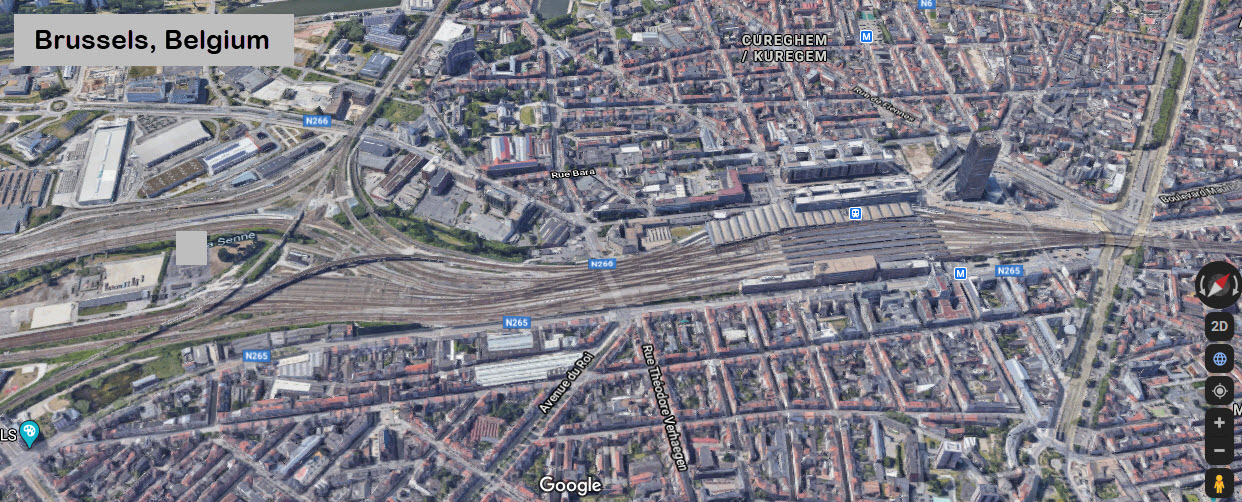
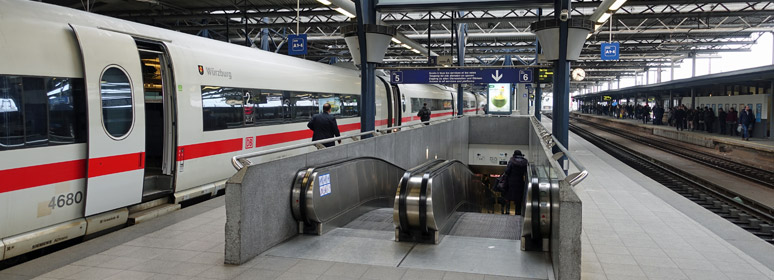 An ICE train at the platforms
An ICE train at the platformsAmsterdam, Netherlands: Amsterdam Centraal Station
GPS Coordinates: 52.37935, 4.89954
Stationsplein, 1012 AB Amsterdam, Netherlands
Centraal station is Amsterdam's largest train station, and was built in 1889 in the Gothic-Renaissance style.
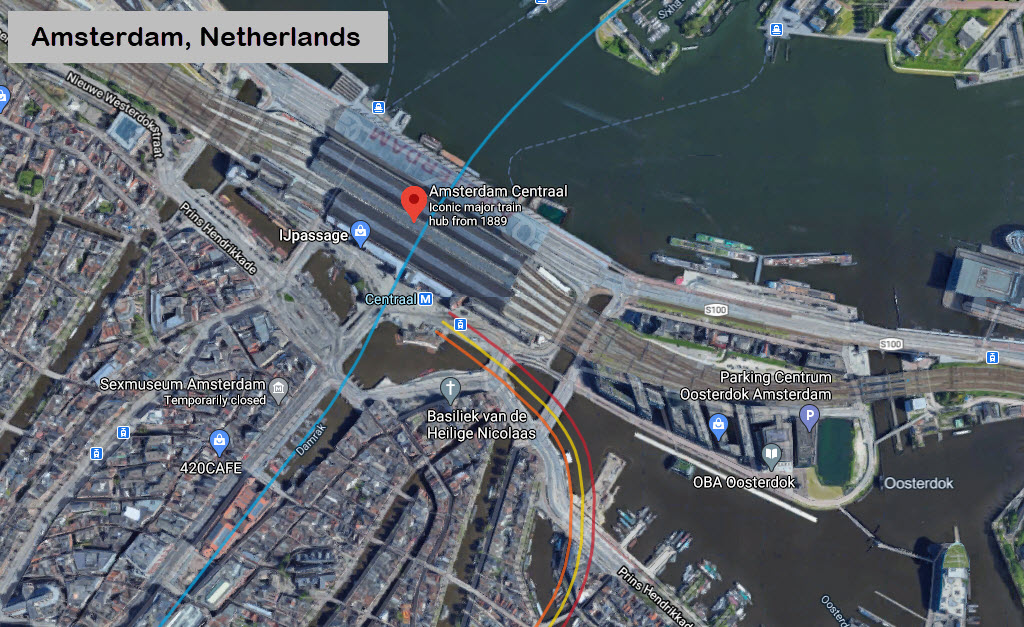
.
The Eurostar in the movies.....
https://cr4.globalspec.com/blogentry/11072/Load-Gauges-and-Railway-Construction-Part-2
In the movie Mission: Impossible (1996), Tom Cruise stars as Ethan Hunt in one of his Mission Impossible series. The movie features a long scene where Jean Reno was flying a helicopter following the train in order to get one of the bad guys off the train. The only problem with the premise, obviously, is the catenary which was CGI'ed out.
Here is a list of the train related issues with the movie:
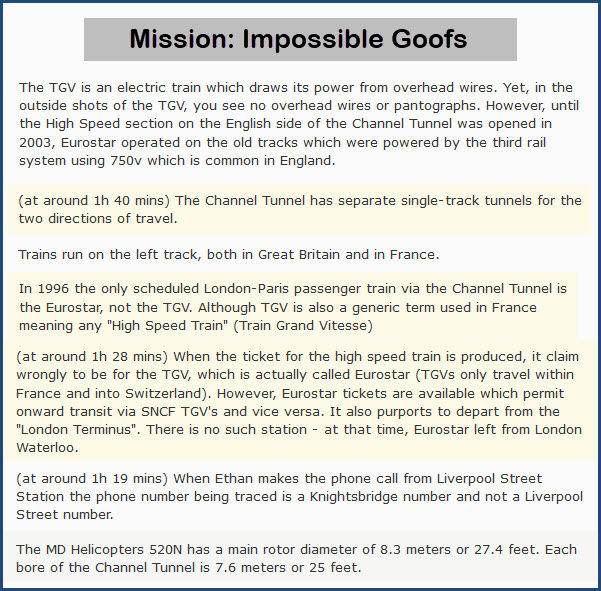

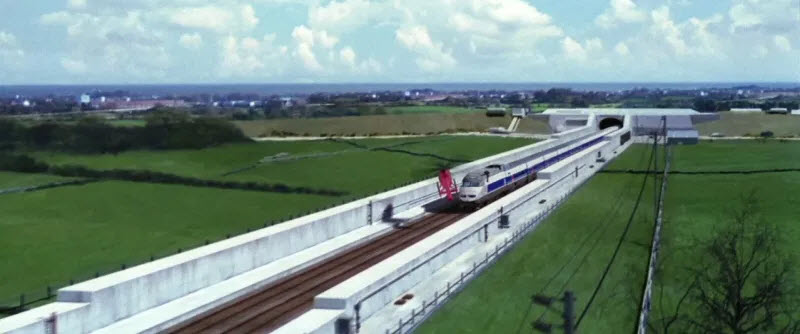
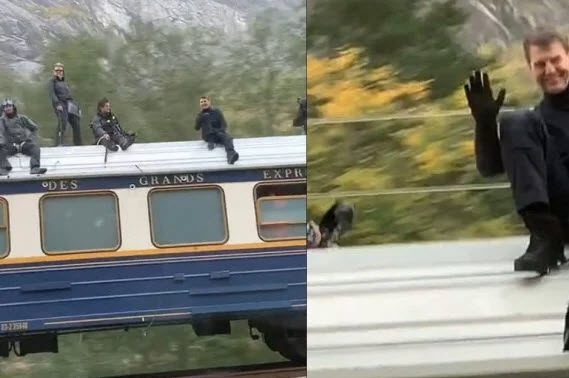
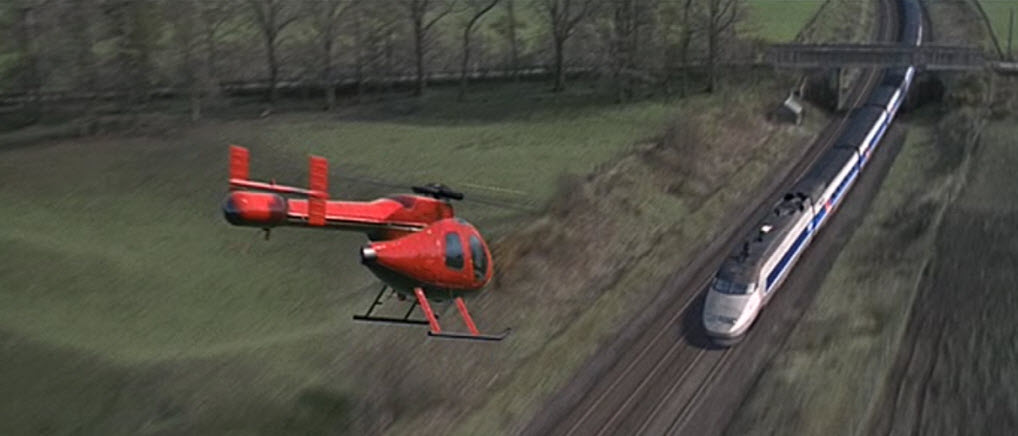
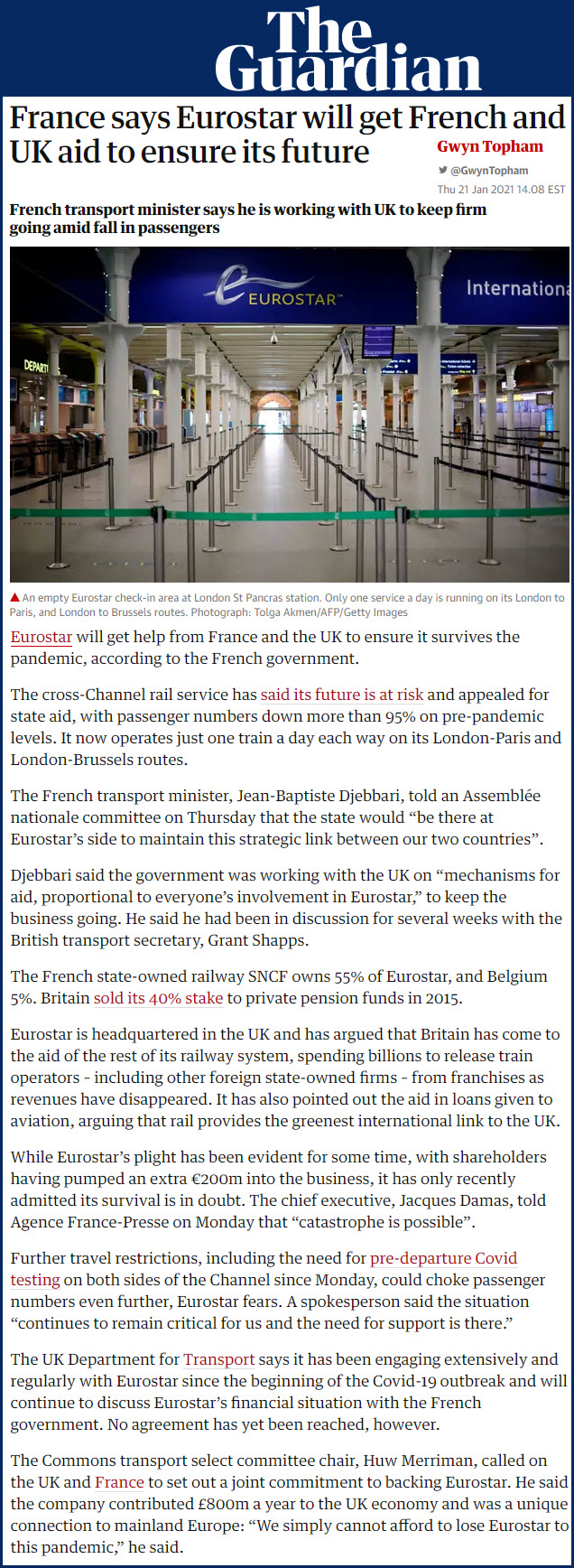
Disclaimers:
I love trains, and I love signals. I am not an expert. My webpages reflect what I find on the topic of the page. This is something I have fun with while trying to help others.
Please Note: Since the main focus of my two websites is railroad signals, the railfan guides are oriented towards the signal fan being able to locate them. For those of you into the modeling aspect of our hobby, my indexa page has a list of almost everything railroad oriented I can think of to provide you with at least a few pictures to help you detail your pike.
If this is a railfan page, every effort has been made to make sure that the information contained on this map and in this railfan guide is correct. Once in a while, an error may creep in :-)
My philosophy: Pictures and maps are worth a thousand words, especially for railfanning. Text descriptions only get you so far, especially if you get lost or disoriented. Take along good maps.... a GPS is OK to get somewhere, but maps are still better if you get lost! I belong to AAA, which allows you to get local maps for free when you visit the local branches. ADC puts out a nice series of county maps for the Washington DC area, but their state maps do not have the railroads on them. If you can find em, I like the National Geographic map book of the U.S..... good, clear, and concise graphics, and they do a really good job of showing you where tourist type attractions are, although they too lack the railroads. Other notes about specific areas will show up on that page if known.
Aerial shots were taken from either Google or Bing Maps as noted. Screen captures are made with Snagit, a Techsmith product... a great tool if you have never used it!
By the way, floobydust is a term I picked up 30-40 years ago from a National Semiconductor data book, and means miscellaneous and/or other stuff.
Pictures and additional information is always needed if anyone feels inclined to take 'em, send 'em, and share 'em, or if you have something to add or correct.... credit is always given! Please be NICE!!! Contact info is here
Beware: If used as a source, ANYTHING from Wikipedia must be treated as being possibly being inaccurate, wrong, or not true.
RAILFAN GUIDES HOME
RAILROAD SIGNALS HOME
NEW MAR11/2021
Last Modified 19-Mar-2021
